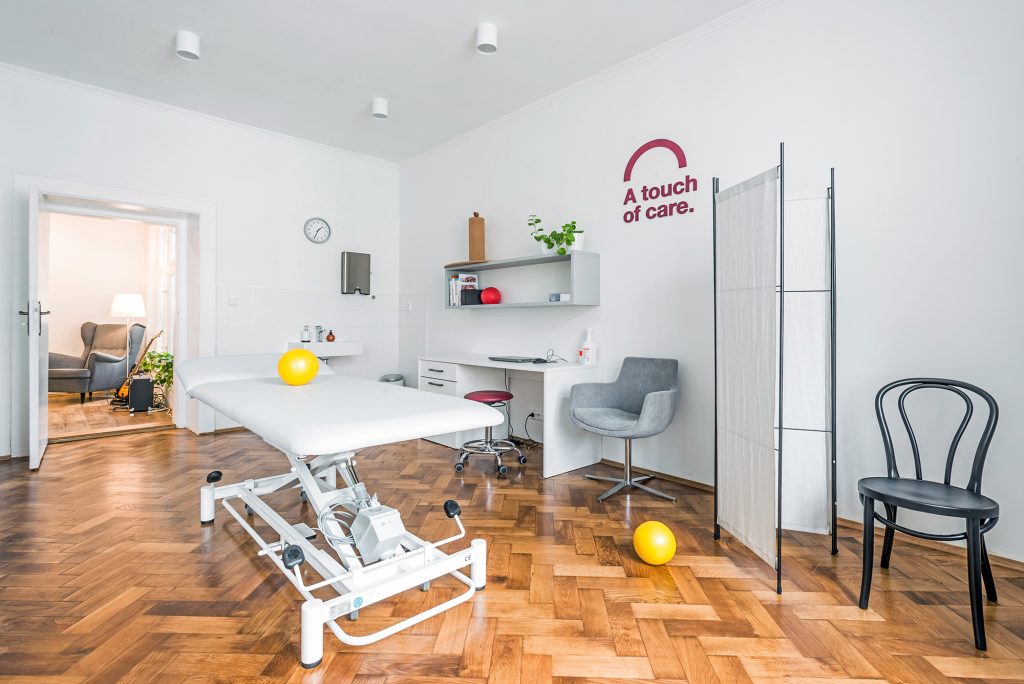Pain Below the Patella – Jumper’s Knee
Many of you may have experienced knee pain, either personally or with someone you know. However, it’s important to understand that not all knee pain has the same cause, and thus the rehabilitation process will vary. In this article, we will explain the symptoms of jumper’s knee, its causes, and how we can approach treatment.
Jumper’s Knee – Patellar Tendinopathy
Jumper’s knee, or patellar tendinopathy, is a condition where the patellar tendon of the quadriceps muscle (the front thigh muscle) becomes overloaded. This typically occurs in sports that involve running, jumping, and quick direction changes, such as volleyball and basketball. However, even recreational athletes who engage in similar activities are at risk. While the condition is multifactorial, the greatest risk comes from excessive strain during activities like jumping, landing, and quick accelerations or decelerations, which can lead to small tears in the patellar tendon of the quadriceps. If ignored, this can eventually lead to tendon rupture. Other risk factors include tight muscles in the quadriceps, hamstrings, and “X-shaped knees.”
How Does Jumper’s Knee Manifest?
Jumper’s knee has two stages: acute and chronic.
In the acute stage, after a single overload, inflammation occurs in the patellar tendon, causing pain below the patella, along with swelling and redness in the area.
Pain Below the Patella
If the overuse continues over time, it progresses into the chronic phase. Swelling typically decreases, and the individual experiences the characteristic pain below (or sometimes above) the patella. Initially, the pain appears after activity. Over time, the pain starts to occur at the beginning of a workout but disappears after warming up, only to return after physical exertion. In the later stages, pain may be present continuously, both during and after physical activity. The worst-case scenario is tendon rupture.
Treatment of Jumper’s Knee
In the acute phase, rest is key
In the acute phase, the focus is on reducing inflammation. Anti-inflammatory medication can help, and applying cold therapy within the first 24 to 48 hours of symptom onset can reduce pain. Ice packs should be applied to the painful area for 10–20 minutes every 2–3 hours. It’s also crucial to rest in the first few days.
Preventing Pain from Returning by Improving Muscle Coordination
Even in the chronic phase, it’s important to avoid activities such as running, explosive strength training, and jumping, if possible. The focus should shift to relaxing the muscles of the lower limbs and strengthening them properly. Initially, isometric contractions (where the muscle neither shortens nor lengthens, but only changes tension) are ideal for gentle adaptation to stress. Afterward, eccentric contractions (muscle lengthening under load) can be introduced, followed by concentric contractions (muscle shortening under load). Eventually, plyometric exercises, including jumps and landings, can be incorporated.
Surgical Treatment is a Last Resort
Most people will opt for conservative treatment (without surgery). However, if the patient does not respond to conservative measures or has severe damage, or even tendon rupture, surgery may be necessary. Physiotherapists always aim to avoid surgery whenever possible.
How is Jumper’s Knee Treated in Physiotherapy?
In physiotherapy, treatment begins with relieving muscle tension using techniques like trigger point therapy, fascial manipulation, shockwave therapy, and others. For pain management, high-intensity laser therapy can significantly reduce pain and inflammation, and improve healing and the immune response. Physiotherapy also works on strengthening the lower limbs and improving muscle coordination. Each patient requires a tailored approach, and a skilled physiotherapist will determine the most effective course of action after assessing the affected area and overall movement quality.
5 Tips for Dealing with Jumper’s Knee Symptoms:
- Avoid jumping and explosive exercises.
- In the acute phase, you can take anti-inflammatory medications such as Ibuprofen or Aescin to reduce swelling.
- Use a massage roller to release tension in the lower limb muscles, combined with proper stretching.
- Focus on endurance exercises for the lower limbs, such as wall squats, split squats, or Spanish squats.
- If there’s no significant improvement after a few days of rest or if pain returns, consult a physiotherapist.







